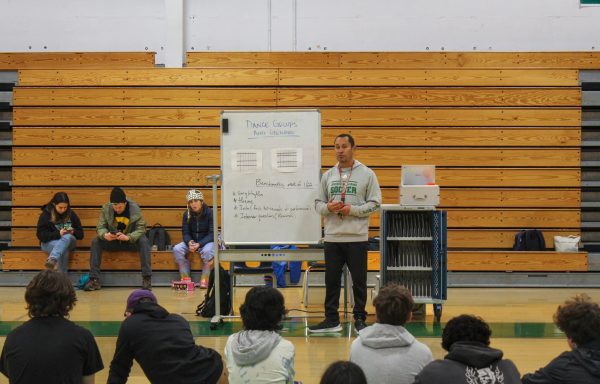Is taking the PSAT really necessary?
College information posted on a bulletin board next to the “Counseling Center.”
The Preliminary Scholastic Aptitude Test (PSAT)/National Merit Scholarship Qualifying Test (NMSQT) is a precursive test for the SAT. The PSAT/NMSQT test is available to sophomores and juniors to take once per year. If a high score is achieved on the PSAT/NMSQT when taken during junior year, it could lead to a National Merit Scholarship.
Many students, including AWHS sophomore Claire Ridella, will take the PSAT/NMSQT this year.
“I guess I just wanted to be prepared for the real SAT because that is what a lot of colleges look at and I want to be familiar with the format,” Claire said.
Archie Williams’s college and career counselor Lisa Nemaier agrees that being prepared for the SAT is important, but she doesn’t think that the PSAT/NMSQT is the best option for all students.
“[The PSAT/NMSQT] is something that we are always going to promote, or advertise, or tell students about because it’s a national exam and high school sophomores and juniors all across the country take it… but personally I don’t think that students have to take it,” said Lisa Neumaier.
The PSAT/NMSQT is mainly available so that juniors can qualify for a National Merit Scholarship, which would give them the recognition of being at the top of PSAT/NMSQT test-takers nationwide, allowing them to possibly receive college scholarships. However, according to Neumaier, only the top five percent of the 1.4 million nationwide test-takers actually receive the National Merit Scholarship.
“[There] just aren’t that many students that are that strong of test-takers,” Neumaier said.
Additionally, the College Board doesn’t send PSAT/NMSQT scores to colleges and the test isn’t timed the same way as the SAT is.
“I do believe that there is some value in students learning the pacing of the test and getting exposure to questions, but the PSAT does this in a very small way,” Neumaier said.
The College and Career Center at AWHS offers other practice tests, which haven’t been announced yet this year but will be available soon. These tests are free, unlike the PSAT/NMSQT, which costs forty dollars. Due to COVID-19, the requirement of standardized tests as a part of college admissions was altered, although many colleges and universities may reevaluate this decision in the future.
“Since COVID has happened, test centers couldn’t offer the tests… so the college world looked at this and [decided], if these students can’t get these tests then we can’t require these tests,” Neumaier said.
This also made colleges rethink their reasoning behind looking at test scores. Many colleges do not think that an applicant’s score on a test should have a heavy influence on admissions.
“It also made a lot of colleges reevaluate their own philosophy about whether a four-hour test on a Saturday and those results were important. So most colleges now do not require the test [besides some really competitive colleges],” Neumaier said.
In fact, the University of California is “test blind” until 2024. This means that they won’t view or consider test scores at all.
Neumaier recommends that students always keep up their GPA because now it is the number one thing that all colleges consider.
Since many colleges have sworn off even looking at the SAT during these times, many students wonder: why would it be necessary to spend forty dollars and their Saturday morning taking the PSAT?
Your donation will support the student journalists of Archie Williams High School. Your contribution will allow us to purchase equipment and cover our annual website hosting costs. Each donation will receive a magazine subscription for a year (6 copies a year), and become a part of the important work our publication is doing.
$35 -- Subscription to the magazine
$50 -- Silver Sponsorship
$75 -- Gold Sponsorship
$100 -- Platinum Sponsorship

Chloe is a sophomore, in her first year of journalism. She loves sight-seeing New York City, hanging out with friends and listening to different types...












